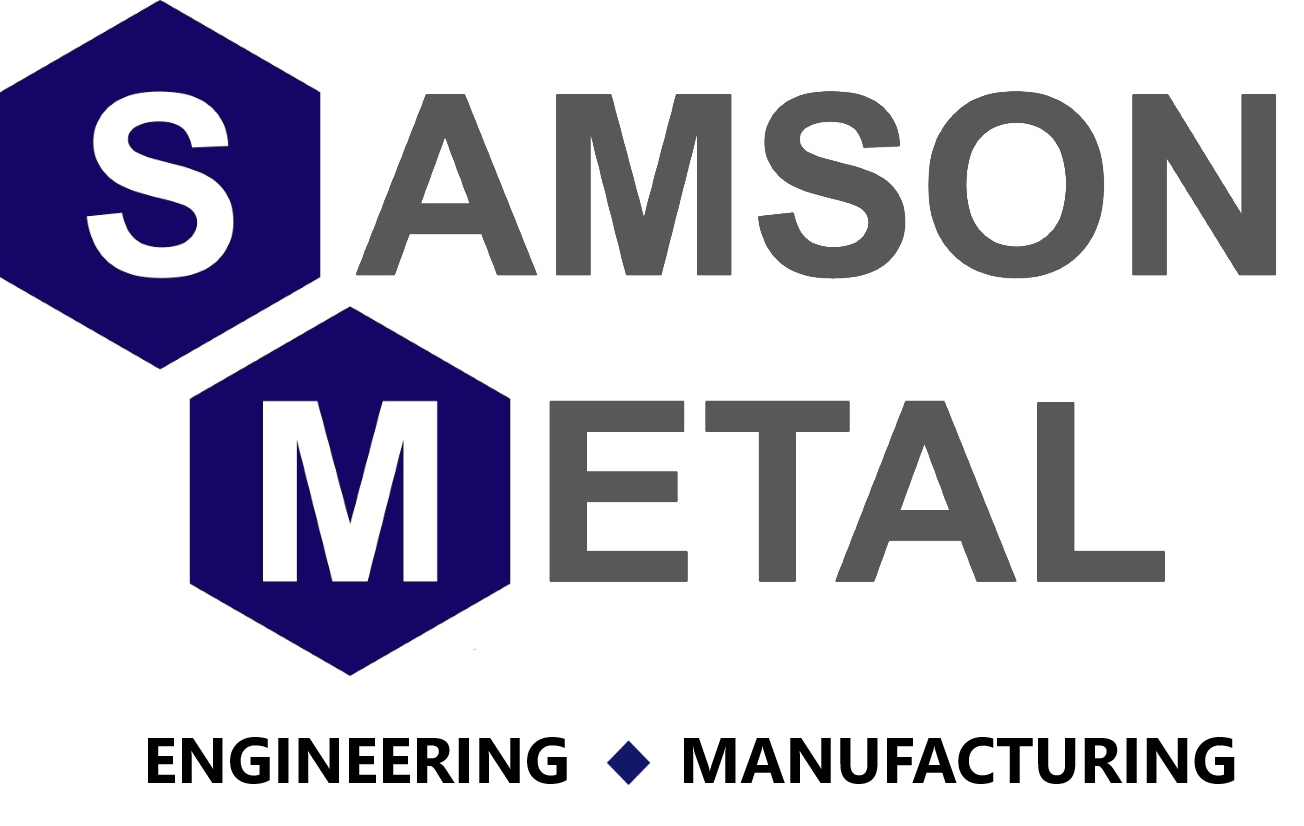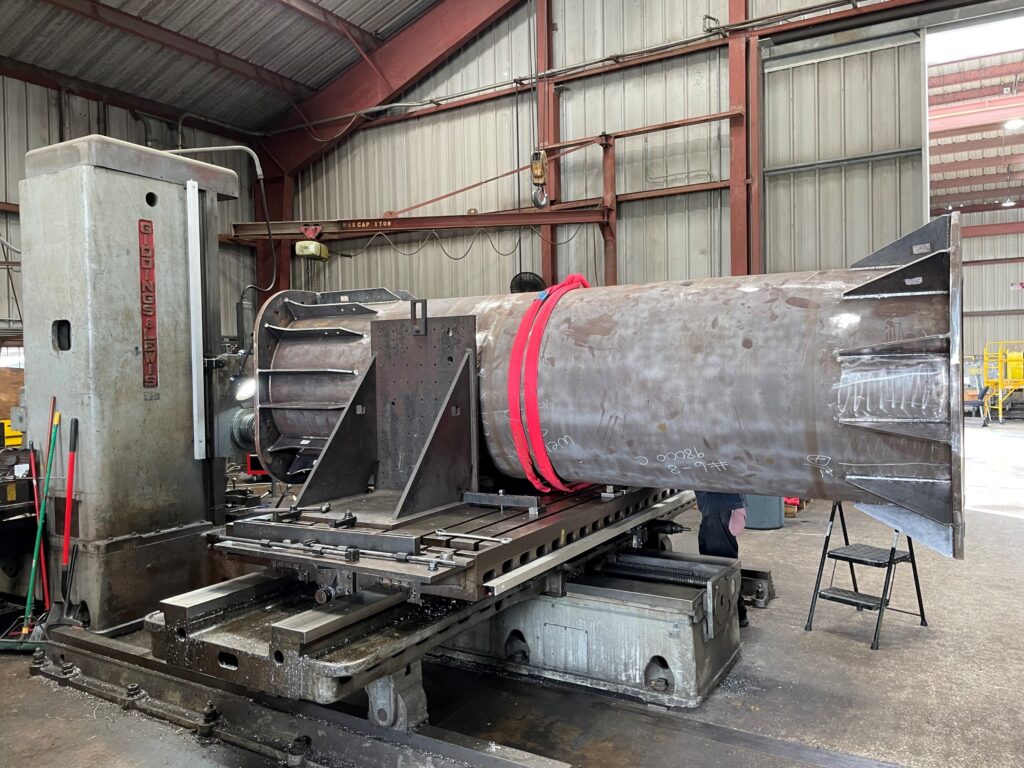In metal fabrication and welding, machining is critical for achieving precision, structural integrity, and functionality in welded components. Two primary approaches—pre-weld machining and post-weld machining—offer distinct advantages depending on project requirements. This article explores the benefits of post-weld machining compared to pre-weld machining and highlights how Samson Metal Engineering and Manufacturing, based in Lakeland, Florida, provides expert guidance to determine the best approach for customer projects.
Understanding Pre-Weld and Post-Weld Machining
- Pre-Weld Machining: Machining raw materials or components to precise dimensions and tolerances before welding. The machined parts are then assembled and welded.
- Post-Weld Machining: Welding components first, followed by machining the welded assembly to achieve final dimensions, tolerances, and surface finishes.
Both methods have their applications, but post-weld machining often provides superior outcomes for complex, high-precision projects. Below, we outline the key benefits of post-weld machining and how Samson Metal Engineering and Manufacturing leverages its expertise to guide customers.
Benefits of Post-Weld Machining
- Correction of Weld Imperfections
- Welds introduce variables like distortion, residual stresses, and surface irregularities. Post-weld machining corrects these issues, ensuring components meet stringent quality standards. For example:
- Pre-weld machining cannot account for these weld-induced changes, potentially leading to out-of-tolerance parts after welding.
- Weld bead irregularities can be smoothed out.
- Distortion from heat input can be machined to restore precise dimensions.
- Weld inclusions or porosity can be addressed by removing affected areas.
- Improved Dimensional Accuracy
- Welding often causes shrinkage or warping due to thermal expansion and contraction. Post-weld machining ensures final dimensions are achieved after these effects occur, which is critical for high-precision components like aerospace parts or pressure vessels. This approach:
- Pre-weld machining assumes welded joints will retain pre-weld dimensions, which is often unrealistic due to weld distortion.
- Achieves tighter tolerances that pre-weld machining may not maintain post-weld.
- Ensures proper alignment and fit-up for assemblies integrating with other parts.
- Enhanced Structural Integrity
- Post-weld machining improves structural integrity by removing surface defects, stress concentrations, or excess weld material. For instance:
- Pre-weld machining cannot address weld-related defects, which may compromise performance under load.
- Sharp edges or notches at weld toes can be eliminated, reducing fatigue failure risks.
- Weld profiles can be refined to improve load distribution.
- Post-weld heat treatment (PWHT), often followed by machining, relieves residual stresses while ensuring design specifications are met.
- Flexibility in Design and Assembly
- Post-weld machining offers greater flexibility for complex or large assemblies by:
- Pre-weld machining requires all components to be machined to exact specifications beforehand, which can be challenging for intricate assemblies.
- Allowing components to be welded into a rough shape for easier assembly, then machined to final specifications.
- Accommodating design changes or adjustments during welding.
- Enabling machining of large weldments as a single structure, reducing the need for precise pre-weld alignment.
- Cost and Time Efficiency in Certain Applications
- While pre-weld machining may seem cost-effective initially, it can lead to costly rework if welds distort machined features. Post-weld machining is often more efficient when:
- Post-weld machining minimizes the risk of wasting resources on parts that may not fit or function correctly after welding.
- Weld distortion is anticipated, and machining is planned to correct it.
- Only specific areas require high precision, allowing targeted machining.
- The cost of scrapping distorted pre-machined parts outweighs post-weld machining costs.
- Surface Finish and Aesthetic Improvements
- Post-weld machining enhances surface finish, which is vital for aesthetics, corrosion resistance, or wear resistance. It can:
- Pre-weld machining cannot address weld-related surface issues, often necessitating additional finishing steps.
- Remove weld spatter, oxide layers, or rough surfaces for a polished appearance.
- Prepare surfaces for coatings, plating, or treatments requiring smoothness.
- Ensure hygienic surfaces free of crevices, critical for industries like medical or food processing.
When to Choose Pre-Weld Machining
Pre-weld machining has merits in specific scenarios:
- Simpler Weldments: For welds with minimal distortion, pre-weld machining can reduce processing time.
- High-Volume Production: With consistent weld quality, pre-weld machining streamlines production.
- Cost Constraints: For projects with looser tolerances, pre-weld machining may suffice, avoiding additional machining steps.
However, these benefits are often limited in applications requiring precision, complex geometries, or high structural integrity, where post-weld machining excels.
Samson Metal Engineering and Manufacturing: Tailored Insights for Customer Projects
Located in Lakeland, Florida, Samson Metal Engineering and Manufacturing is a trusted partner for engineering, welding, machining, and assembly across industries like aerospace, power generation, and entertainment. With over 70 years of combined management experience and certifications such as AS9100D:2016 and ISO 9001:2015, Samson Metal is uniquely positioned to guide customers in choosing between pre-weld and post-weld machining based on project needs.
How Samson Metal Provides Insight
- Project-Specific Analysis
- Samson Metal begins by thoroughly understanding customer requirements, including tolerances, material properties, and end-use conditions. For example:
- For aerospace components requiring tight tolerances, Samson may recommend post-weld machining to correct weld-induced distortions and ensure compliance with AS9100D standards.
- For simpler structural steel fabrications, pre-weld machining might be advised to streamline production if distortion risks are low.
- Samson Metal begins by thoroughly understanding customer requirements, including tolerances, material properties, and end-use conditions. For example:
- Advanced Capabilities
- Samson’s 53,000 sq. ft. facility in Lakeland is equipped with over 15 welding stations, advanced CNC and manual machining centers, and heavy-duty overhead cranes, enabling both pre- and post-weld machining with precision. Their capabilities include:
- Precision turning, milling, drilling, and grinding for post-weld finishing.
- Certified welding processes (ASME/AWS qualified) to minimize defects, reducing the machining burden.
- In-house CAD/CAM and assembly/testing services to ensure seamless integration of machining and welding processes.
- Samson’s 53,000 sq. ft. facility in Lakeland is equipped with over 15 welding stations, advanced CNC and manual machining centers, and heavy-duty overhead cranes, enabling both pre- and post-weld machining with precision. Their capabilities include:
- Material Expertise
- Samson’s team is experienced in working with diverse materials, including carbon steel, stainless steel, aluminum, titanium, and plastics. They assess how materials respond to welding (e.g., distortion in stainless steel vs. aluminum) to recommend the optimal machining approach. For instance, materials prone to significant weld distortion may benefit from post-weld machining to achieve final tolerances.
- Quality Assurance
- Certified to AS9100D and employing a rigorous quality management system, Samson ensures that whether pre- or post-weld machining is chosen, the final product meets industry standards. Their in-house testing and inspection capabilities allow them to verify weld quality and machined dimensions, reducing the risk of costly rework.
- Customer-Centric Solutions
- Samson Metal tailors solutions to each project, whether it involves single machined parts or complex assemblies. For example:
- By collaborating closely with customers, Samson identifies whether pre-weld machining’s efficiency or post-weld machining’s precision best suits the project’s goals, timeline, and budget.
- A power generation client needing pressure vessels might benefit from post-weld machining to ensure leak-tight surfaces and precise dimensions after welding.
- An entertainment industry client requiring large weldments for ride systems might opt for post-weld machining to achieve aesthetic finishes and structural reliability.
- Samson Metal tailors solutions to each project, whether it involves single machined parts or complex assemblies. For example:
- Case Study Example
- Consider a customer in the aerospace industry requiring a titanium weldment. Samson’s team would:
- This approach ensures the component meets stringent aerospace standards while minimizing rework risks compared to pre-weld machining, which could be compromised by weld distortion.
- Evaluate the design for weld distortion risks due to titanium’s high heat sensitivity.
- Recommend post-weld machining to correct distortions and achieve tight tolerances, leveraging their CNC machining centers.
- Perform PWHT if needed to relieve stresses, followed by precision machining to meet AS9100D requirements.
- Conduct non-destructive testing to ensure weld integrity before final machining.
- This approach ensures the component meets stringent aerospace standards while minimizing rework risks compared to pre-weld machining, which could be compromised by weld distortion.
- Consider a customer in the aerospace industry requiring a titanium weldment. Samson’s team would:
Why Choose Samson Metal?
Samson Metal Engineering and Manufacturing’s extensive experience, state-of-the-art facility, and commitment to quality make them an ideal partner for navigating the pre-weld vs. post-weld machining decision. Their ability to handle projects from design to final assembly, combined with industry-specific expertise, ensures customers receive tailored recommendations that optimize performance, cost, and delivery. By offering turnkey solutions—encompassing engineering, certified welding, precision machining, and testing—Samson delivers components that exceed expectations.
Key Considerations for Post-Weld Machining
To maximize post-weld machining benefits, manufacturers should consider:
- Material Selection: Materials like titanium or high-strength steels may require specialized machining due to weld-induced changes in hardness.
- Fixturing and Setup: Welded assemblies may need custom fixturing to accommodate distortions during machining.
- Weld Quality: Poor welds (e.g., excessive porosity) can complicate machining, necessitating robust welding procedures.
- Cost-Benefit Analysis: Evaluate whether additional machining justifies improved quality for the application.
Samson Metal’s expertise in these areas ensures customers make informed decisions aligned with project goals.
Conclusion
Post-weld machining offers significant advantages over pre-weld machining, including improved dimensional accuracy, enhanced structural integrity, and flexibility for complex assemblies. While pre-weld machining suits simpler or high-volume projects, post-weld machining is often the preferred choice for high-precision, high-performance components. Samson Metal Engineering and Manufacturing, based in Lakeland, Florida, plays a pivotal role in guiding customers through this decision. With their advanced machining capabilities, material expertise, and customer-driven approach, Samson ensures the chosen machining strategy—pre- or post-weld—delivers optimal results tailored to each project’s unique requirements.
For manufacturers seeking precision and reliability, partnering with Samson Metal Engineering and Manufacturing provides the insight and expertise needed to achieve superior outcomes in welding and machining projects.



